#anton leeuwenhoek
Text
He says he's seen a housefly's brain.
The Microscope, Maxine Kumin
From "Reflections on a Gift of Watermelon Pickle... And Other Modern Verse" - compiled by Stephen Dunning, Edward Lueders, and Hugh Smith
#book quote#poetry#reflections on a gift of watermelon pickle#stephen dunning#edward lueders#hugh smith#the microscope#maxine kumin#anton leeuwenhoek#microscopy#housefly#brain
4 notes
·
View notes
Text
The Microscope
Maxine Kumin
Anton Leeuwenhoek was Dutch.
He sold pincushions, cloth, and such.
The waiting townsfolk fumed and fussed
As Anton's dry goods gathered dust.
He worked, instead of tending store,
At grinding special lenses for
A microscope. Some of the things
He looked at were:
mosquitoes' wings,
the hairs of sheep, the legs of lice,
the skin of people, dogs, and mice;
ox eyes, spiders' spinning gear,
fishes' scales, a little smear
of his own blood,
and best of all,
the unknown, busy, very small
bugs that swim and bump and hop
inside a simple water drop.
Impossible! Most Dutchmen said.
This Anton's crazy in the head.
We ought to ship him off to Spain.
He says he's seen a housefly's brain.
He says the water that we drink
Is full of bugs. He's mad, we think!
They called him dumkopf, which means dope.
That's how we got the microscope.
"Reflections on a Gift of Watermelon Pickle... And Other Modern Verse" - compiled by Stephen Dunning, Edward Lueders, and Hugh Smith
#book quotes#poetry#reflections on a gift of watermelon pickle#stephen dunning#edward lueders#hugh smith#the microscope#maxine kumin#anton leeuwenhoek#dutch#microscopy#mosquito#sheep#lice#skin#ox#spider#fish scales#blood#water droplets#pincushion
1 note
·
View note
Text
Antecedentes de la Teoría Celular.
El conjunto de observaciones y técnicas microscópicas que permitió la formulación de la misma tuvo un largo camino desde que en el siglo XVII Anton van Leeuwenhoek.
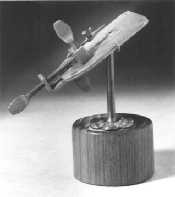

Aficionado que fabricaba sus propios microscopios simples (de una sola lente) de una calidad excepcional con el que pudo descubrir el hasta entonces desconocido mundo de los microbios, entre ellos las bacterias, a las que él denominó animálculos.
El nombre de la célula se la debemos al científico británico Robert Hooke que lo acuñó después de que observara a través de su microscopio de finas láminas de corcho y la presencia de celdas o compartimientos que lo componían;

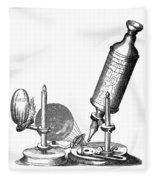
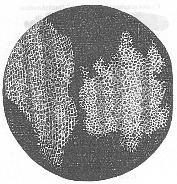
en realidad observó las paredes celulares de las células vegetales muertas. El término célula procede del latín “cella” o “cellulae” que quiere decir “pequeño compartimiento” o “celda pequeña”.
0 notes
Text



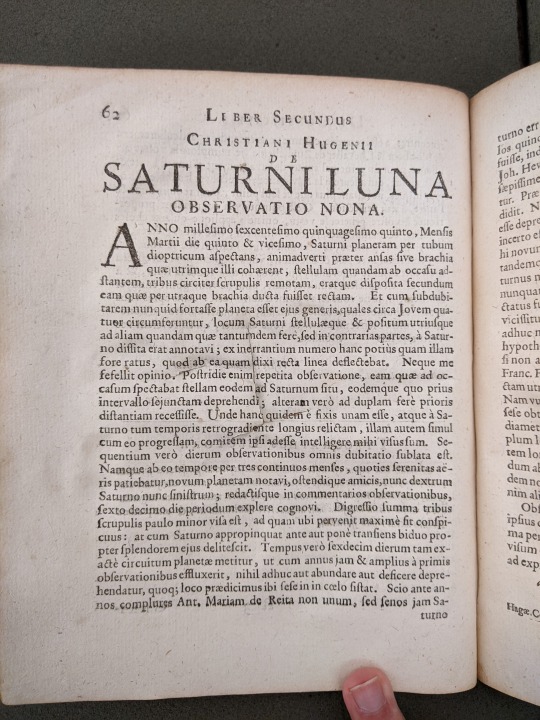
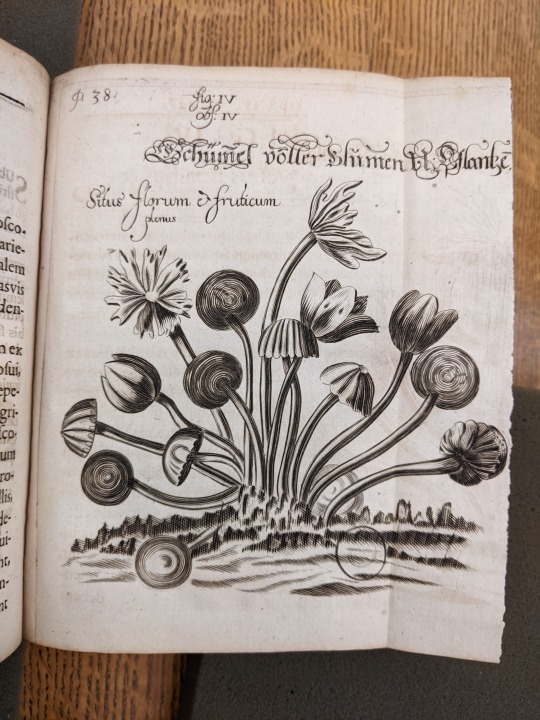

We have an exciting new acquisition to feature this Friday! Last week, a generous donor gave the Libraries a copy of Pierre Borel's De Vero Telescopii Inventore (1655). This work is a history of the invention of the telescope from antiquity to the time of writing. At the time, both Hans Lippershey and Zacharias Janssen claimed to be the inventor of the telescope, and Pierre Borel found Janssen's claims to be more convincing. Present-day historians have tended to recognize Lippershey instead, but they do give Janssen credit for inventing the compound microscope.
Borel also printed a letter from Christiaan Huygens' in which he details his observations of Titan, one of the moons of Saturn. This letter also contained Huygens' identification of the rings of Saturn in an anagram - a sly way to sneak the idea into print without giving it away before Huygens' own publication of Systema Saturnium in 1659.
This volume is bound with several others: Johann Franz Griendel's Micrographia nova (1687); Anton van Leeuwenhoek's Ontledingen en ontdekkingen van levende dierkens in de teel-deelen van verscheide dieren, vogelen en visschen (1696); and Govard Bidloo's Brief aan Antony van Leeuwenhoek (1698).
Many thanks to donor Rick Hardin for this newest addition to the collection.
De vero telescopii inventore : cum brevi omnium conspiciliorum historia : ubi de eorum confectione, ac usu, seu de effectibus agitur, novaque quaedam circa ea proponuntur : accessit etiam centuria observationum microcospicarum / Authore Petro Borello, regis Christianissimi consiliario, & medico ordinario. VAULT QB88 .B72 1655
#history of science#histsci#astronomy#history of astronomy#newacq#bookhistory#rare books#mizzou#special collections#university of missouri#libraries#kelli h
32 notes
·
View notes
Text
Metagenomics and Metatranscriptomics: New Insights and Pipelines to Better Navigate Data Analysis

Scientists at the Institute of Parasitology and Biomedicine and the University of Granada, Spain, along with collaborators, developed two pipelines that could automate and optimize metagenomics and metatranscriptomics data analysis. These pipelines could be adapted for 16S, shotgun, and RNA-Seq data. Its performance was validated through three studies by assessing its taxonomy classification ability.
When Anton van Leeuwenhoek first opened the doors to the unseen world of microorganisms in 1673 through his self-made single-lens microscope, it couldn’t have been possible to imagine the explosion of discoveries that were to follow in its wake. The paradoxical world of microbes is a source of infinite curiosity to many scientists around the world. Thus, it was a no-brainer that with the advent of NGS, the microbes would get their very own niche within it—Metagenomics.
Continue Reading
62 notes
·
View notes
Note
2, 13, 14, 25, 32, 43, 44
2- I think 8 I only wear combat boots so idk if it changes in different like shoes
13-Im a sadist so I think pain but I’m also largely asexual everything my boyfriend does bc I love my boyfriend obviously too
14- people who fetishized trans people😨 they’re fucking freaks if another cis man calls me a femboy I’m shooting myself
25- any date with my boyfriend I really love like horror houses and like amusement parks though my boyfriend doesn’t love rides though😭
32-idk I don’t really get triggered by words more like actions
43-MY BOYFRIEND of course he’s the handsomest man I know
44- Anton van Leeuwenhoek invented the microscope (I’m studying health history rn😭)
4 notes
·
View notes
Text
Well, if Mr. Anton van Leeuwenhoek was diagnosed with giardiasis posthumously based on his notes, why can't I diagnose Newton as autistic posthumously based on his notes? Have you considered that?
2 notes
·
View notes
Text
Do you want to become an embryologist? Then here’s what you need to know…
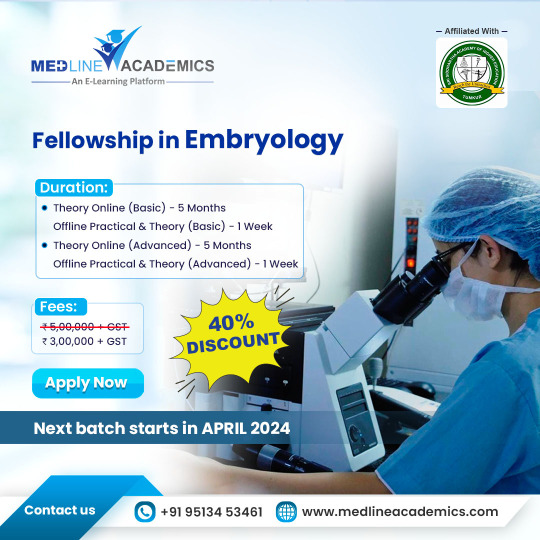
In the words of Sir Issac Newton “If I have seen further, it is by standing on the shoulder of the earlier giants.”
Ancient Egyptians knew about methods of incubation of eggs of the birds. They also believed that the Sun God Aten is the creator of germ in woman and seed in man, and gives life to the baby in the body of the mother. Besides the Garbha Upanishad, an ancient scripture of the Hindus describes the following about embryos:
Embryo comes into existence with the conjugation of blood and semen the period favourable for conception
Developmental stages of embryo’s are as under:
1 day – formation of kadala
After 7 nights - Formation of Vesicle
After a month - Formation of Spherical Mass
After 2 months – Formation of head
After 3 months – formation of limbs
The Quran, the holy book of the Muslims, describes that the human beings are produced from a mixture of secretions from the male and female. It also mentions that the human being is crated from nufla, which means a small drop. It also states that the resulting organisms settles in the womb like a seed 6 days after its beginning. The embryo resembles a leech and later it resembles a ‘chewed substance’.
Legends who have made significant contribution in the field of embryology:
Hippocrates
Aristotal
Claudeus Galen
Samuel-el-Yehudi
Leonardo da Vinci
William Harvey
Regnier de Graaf
Johan Ham van Arnhiem & Anton Van Leeuwenhoek
Caspar Friedrich Wolff
Lazaro Spallanzani
Heinrich Christian Pander
Now, that you have some idea about the origin of this great branch of science, let us look at the current scenario and what the future holds for us.
Increased Number of ART Clinics
The past decade has seen an upsurge in the number of ART Clinics. Studies by ICMR reported that 1100 ART Clinics were registered in India in 2019. Isn’t it quite obvious that with the multiplications of these ART clinics, the demand for embryologists would also grow? This gives you an opportunity to make a career as an embryologist. The demand is expected to continue as more couples seek infertility treatments and as ART procedures become more accessible.
Embryology Course Eligibility and Duration
The minimum embryology course eligibility would require a graduation and postgraduation in biological science, but what will make you stand out from the rest? The answer is continued medical education and qualifications. Keeping yourself updated and informed of the latest guidelines and technologies, will always make you the preferred candidate.
Further, embryology course duration always differs given the diverse educational backgrounds including biology, biotechnology, and medicine. The embryology course duration for short-term certification courses would range from 2-5 days comprising primary and basic modules. The long-term certification courses can range from 6-12 months comprising advanced modules, practical training and clinical postings.
Training Institution
Responding to the requirement of trained embryologists, there has been a great increase in the number of training institutions as well. There are various institutions in India offering embryology training courses which includes basic, advanced and fellowship program in Embryology.
Now the question is which is the best institution for pursuing embryology training?
“Ordinary transforms into extraordinary through the addition of that little extra.” Medline Academics is that little extra for you! Medline Academics AKA Dr. Kamini Rao IVF Training, is one the best institution offering short- and long-term certification courses. What makes it different from several other training institution is the hybrid mode of training. The theory section in these programs will be covered online and the practicals will be provided after the completion of the theory module in Bangalore. Medline Academics contains a high end simulation lab for performing various surgical procedures which are:
Oocyte Pick up
Semen analysis
Semen preparation
IVF Insemination
Embryo Transfer
Embryo Culturing
ICSI
IMSI
Immobilisation
Thawing of Embryos & Oocytes and so much more…
These are high-fidelity mannequins that closely imitate human physiology and can simulate various medical conditions and scenarios. The combination of the AR and VR along with these machines allows learners to immerse themselves in realistic medical environments and practice procedures in a simulated setting which no less than reality. The assessment at the end of each procedure enables learners to review their performance for self-assessment and improvement. Sophisticated simulation labs can also help with research projects that examine human factors in healthcare, develop new simulation technologies, or assess the efficacy of simulation-based training approaches. In replicated clinical settings, simulation laboratories frequently offer areas for students from various healthcare professions to cooperate and hone their cooperation skills.
Know more about this training institution at www.medlineacademics.com
0 notes
Text
Ins & Outs of Sperm Freezing
This little instrument opened up the world of sperm to us (Courtesy Unsplash)
Given the burgeoning popularity of egg and sperm freezing, you might think that this is new technology that quickly hit its stride. Although true with eggs, sperm freezing techniques developed even before the United States was born. It all started with Anton van Leeuwenhoek, the Dutch father of microbiology, who…

View On WordPress
0 notes
Text
Anton Van Leeuwenhoek Vagi, Biografía y estudios microbiológicos
Anton Van Leeuwenhoek Vagi, nace en Delft, Holanda el 24 de octubre de 1632. Fallece en Delft el 26 de agosto de 1723. Realizó sus estudios en la ciudad de Ámsterdam. A sus veinte años de edad regresó a su ciudad natal y se dedica a la compra venta de telas.
También Anton Van Leeuwenhoek, Se sentía atraído por el estudio de las ciencias. Por tal motivo realiza investigaciones y estudios por cuenta propia de matemática, química, biología, astronomía, ciencias naturales y física.
Si quieres saber mas sigue el siguiente enlace:
Fuente: Anton Van Leeuwenhoek Vagi, Biografía y estudios
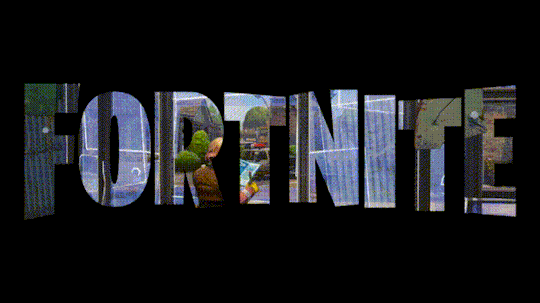
#tarea#educacion#encuentra tu tarea#articulo#universidad#colegio#ciencia#biografia#tumblr milestone#español#juegos
0 notes
Text
Medical microbiology

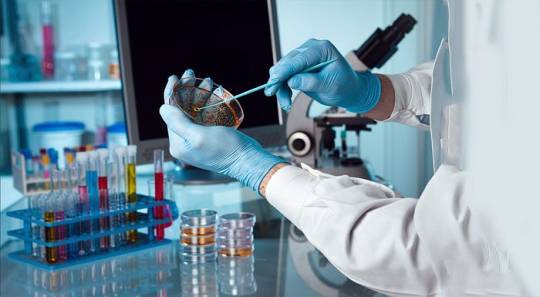
A clinical or medical microbiologist, typically with a Bachelor’s or Master’s degree in Microbiology and sometimes a Ph.D. in life sciences, studies the characteristics of pathogens, their transmission modes, and mechanisms of infection. They play a vital role in providing identification of pathogens, suggesting treatment options, and contributing to the development of health practices.
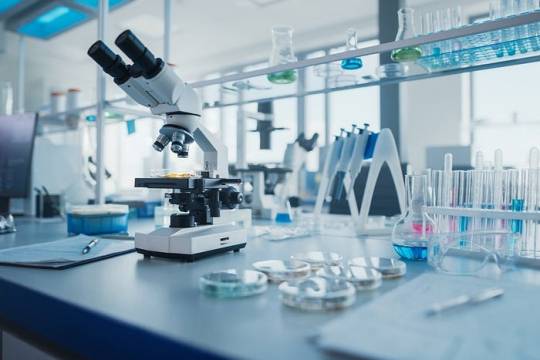
The historical milestones in medical microbiology include Anton van Leeuwenhoek’s observations of microorganisms in 1676, Edward Jenner’s development of the smallpox vaccine in 1796, and Louis Pasteur’s work on vaccines and pasteurization in 1857. Robert Koch’s germ theory and postulates in the late 19th century were pivotal. The Gram stain, developed by Hans Christian Gram in 1884, revolutionized bacterial identification.

Infectious diseases, including bacterial, viral, parasitic, and fungal, are commonly treated in medical microbiology. Diagnostic tests involve microbial culture, microscopy, biochemical tests, and genotyping. Microbiological culture isolates pathogens in the laboratory, while microscopy provides detailed observations. Biochemical tests and serological methods aid in identifying infectious agents.

However, the rise of antibiotic resistance poses a significant challenge. Medical microbiologists must consider the specificity and effectiveness of antimicrobial drugs, as well as the presence of resistant strains. Phage therapy, an alternative to antibiotics, is being explored to combat antimicrobial resistance.
In conclusion, medical microbiology is a dynamic field that not only diagnoses and treats diseases but also explores the benefits of microbes for human health. With historical milestones and continuous advancements, this field plays a crucial role in shaping healthcare practices and combating infectious diseases.
Wishing you all the best in pursuing your studies in Medical Bacteriology. It involves a lot of detailed focus on the causative agents of diseases.
In case of any challenges or if you’re looking for guidance during the study period, do not hesitate to;
Email us at;[email protected]
#healthcare#medical students#fullmetal alchemist#aesthetic#assignment help#kittens#puppies#ratblr#medicine#nursing school#nurse#pharmacy#homework help#nursing student#studyblr#student#educate yourself#education#educate yourselves#medical help#bacteriology#bacteria#bacteriophage#medical microbiology
0 notes
Text
Cell theory
▪️Cell Theory:
• Schleiden and Schwann
▪️“Omnis cellula-e-cellula”
: Rudolf Virchow
▪️Coined the term ‘cell’
: Robert Hooke
▪️First person to see live cells under microscope:
• Anton Van
• Leeuwenhoek
▪️Smallest cell
: Mycoplasma (0.3µm)
▪️Mesosome:
• Infolding of plasma membrane in prokaryotesvesicles, tubules or lamellae
• Help in DNA replication and cell wall formation
▪️Cell envelope:
• In prokaryotic cells
• Made up of glycocalyx (slime
or capsule), cell wall and plasma membrane
▪️Plasmid
• Extra chromosomal, circular DNA in prokaryotic cells
▪️Pili and Fimbriae
• Help bacteria in attachment
▪️Prokaryotic ribosomes:
• 70S (50S and 30S)
• Polysome- several ribosomes attached to mRNA for protein synthesis
▪️Bacterial Cell wall:
• G +ve bacteria- Thick peptidoglycan and teichoic
acid
• G -ve bacteria- Thin peptidoglycan and lipopolysaccharides
▪️Peptidoglycan:
• Polymer of Cross linked monomers - Nacetylglucosamine (NAG)
• N-acetylmuramic acid (NAM) attached to peptide
▪️Fluid mosaic model:
• Singer and Nicolson
▪️Endoplasmic reticulum:
• Rough ER- Protein synthesis
• Smooth ER- Lipid synthesis
▪️Golgi Complex:
• Synthesis of glycoproteins and glycolipids
▪️Tonoplast:
• A single membrane surrounding vacuoles
Plastids
• Double membrane bound and contain extra
chromosomal DNA, 70S ribosomes
▪️Mitochondria:
• Double membrane bound and contain extra
chromosomal circular DNA, 70S ribosomes.
• Site for aerobic respiration.
▪️Leucoplasts:
• Amyloplast- store carbohydrate
• Elaioplast- store oil and fat
• Aleuroplast- store proteins
▪️Observed ribosomes for the first time:
• George Palade
▪️Eukaryotic ribosome
•80S (60S and 40S):
▪️Robert Brown:
• First described nucleus
▪️Nucleolus:
• Site for ribosomal
• RNA synthesis
• Chromatin is visible at
Interphase nucleus
▪️Lysosomes:
• Contain hydrolytic enzymes
▪️Glyoxysomes
• Present in plants and some fungi
• Degradation of fats in seeds
• Glyoxalate cycle
▪️Peroxisomes
• Oxidation of long chain fatty acids
• Biosynthesis of plasmalogens
• Contains oxidative enzymes; uric acid oxidase, catalase, etc.
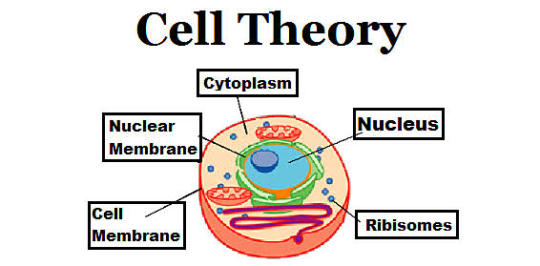
0 notes
Text
5-. MI APRENDIZAJE EN EL UNIVERSITY COLLEGE OF LONDON
Hoy me he dado cuenta de que llevaba mucho tiempo sin escribir en mi bitácora de viaje, así que lo que voy a hacer va a ser recapitular desde el momento que salí de la Casa Galton. Todo este tiempo, he estado en el University College of London resolviendo casos con John Marlott. Al final hemos conseguido encontrar a Mary Taylor. Junto a ella también hemos encontrado a muchos más niños, pero que no han tenido la misma suerte. Por ello me he dedicado la mayoría del tiempo a estudiar los distintos tipos de tejidos, para así poder saber con qué fines les han hecho los cortes. Antes de eso, realicé una investigación a fondo tras salir de la Casa Galton sobre las partes de la célula, y esta es una de las fotos que encontré en un libro.

También, estuve aprendiendo un montón sobre la creación de la teoría celular y sobre sus padres (Anton van Leeuwenhoek, Robert Hooke, Robert Brown, Matthias Jakob Schleiden, Theodor Schwann, Rudolf Virchow y Santiago Ramón y Cajal). Tras esto, dominando bien el tema de las células, decidí ponerme entonces con los tejidos, y he aprendido mucho sobre la localización, la estructura, y la función de los tejidos humanos (epitelial: epitelios de revestimiento y epitelios glandulares; conectivo: conjuntivo, adiposo, cartilaginoso y óseo; muscular: liso, estriado o esquelético y cardíaco; y nervioso: neuronas y células de la glía). Para examinarlos, utilicé un microscopio junto a mis compañeros de la aventura (Ocaña, Hernaiz y Jiménez), y Marlott nos enseñó a utilizarlo, pues no teníamos ni idea de como utilizarlo.

Examinamos un muslito de pollo, y la experiencia fue muy buena, y como en otras ocasiones, nos pudimos entender muy bien los cuatro. Ahora, no sé a donde nos dirigiremos, pero estoy adquiriendo muchos conocimientos sobre el aparato digestivo, pues tengo el presentimiento de que en algún momento me va a ser de mucha ayuda.
0 notes
Text
Portrait of Anton van Leeuwenhoek (1632 - 1723), a Dutch microscopist. Although Van Leeuwenhoek had no formal scientific training, he became an enthusiastic microscopist by making over 500 single lens microscopes throughout his life. Van Leeuwenhoek made the first detailed descriptions of various microorganisms, such as bacteria and protozoa. He did not believe in the concept of spontaneous generation, and was ultimately proved correct a century and a half later.

0 notes